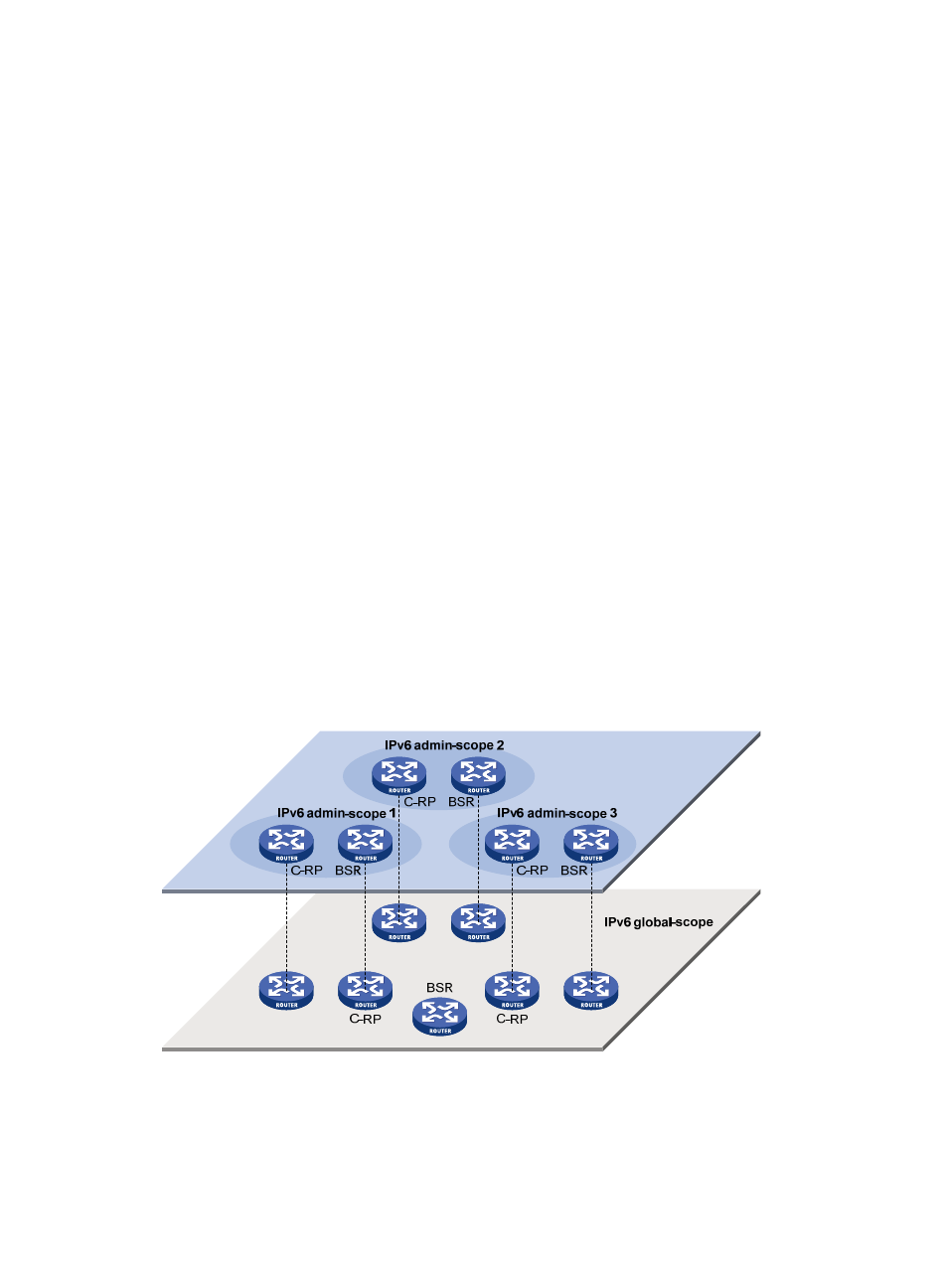H3C Technologies H3C S10500 Series Switches User Manual
Page 383

368
To implement refined management, an IPv6 PIM-SM/IPv6 BIDIR-PIM domain can be divided into one
IPv6 global scope zone and multiple IPv6 administratively scoped zones (IPv6 admin-scope zones). We
call this IPv6 administrative scoping mechanism.
The IPv6 administrative scoping mechanism effectively releases stress on the management in a
single-BSR domain and enables provision of zone-specific services using private group addresses.
IPv6 admin-scope zones correspond to IPv6 multicast groups with different scope values in their group
addresses. The boundary of the IPv6 admin-scope zone is formed by zone border routers (ZBRs). Each
IPv6 admin-scope zone maintains one BSR, which serves multicast groups within a specific scope. IPv6
multicast protocol packets, such as assert messages and bootstrap messages, for a specific group range
cannot cross the IPv6 admin-scope zone boundary. IPv6 multicast group ranges served by different IPv6
admin-scope zones can overlap. An IPv6 multicast group is valid only within its local IPv6 admin-scope
zone, functioning as a private group address.
The IPv6 global scope zone maintains a BSR, which serves the IPv6 multicast groups with the Scope field
in their group addresses being 14.
Relationship between IPv6 admin-scope zones and the IPv6 global scope zone
The IPv6 global scope zone and each IPv6 admin-scope zone have their own C-RPs and BSRs. These
devices are effective only in their respective IPv6 admin-scope zones. That is, BSR election and RP
election are implemented independently within each IPv6 admin-scope zone. Each IPv6 admin-scope
zone has its own boundary. The multicast information cannot cross this border in either direction. A better
understanding of the IPv6 global scope zone and IPv6 admin-scope zones should be based on
geographical space and group address range.
1.
Geographical space
IPv6 admin-scope zones are logical zones specific to particular multicast groups. The multicast packets
of these multicast groups are confined within the local IPv6 admin-scope zone and cannot cross the
boundary of the zone.
Figure 101 Relationship between admin-scope zones and the global scope zone in geographic space
, for multicast groups with the same Scope field in their group addresses, IPv6
admin-scope zones must be geographically separated from one another. Namely, a router must not serve
different admin-scope zones. In other words, different admin-scope zones contain different routers,
whereas the global scope zone covers all routers in the IPv6 PIM-SM/IPv6 BIDIR-PIM domain. Multicast
